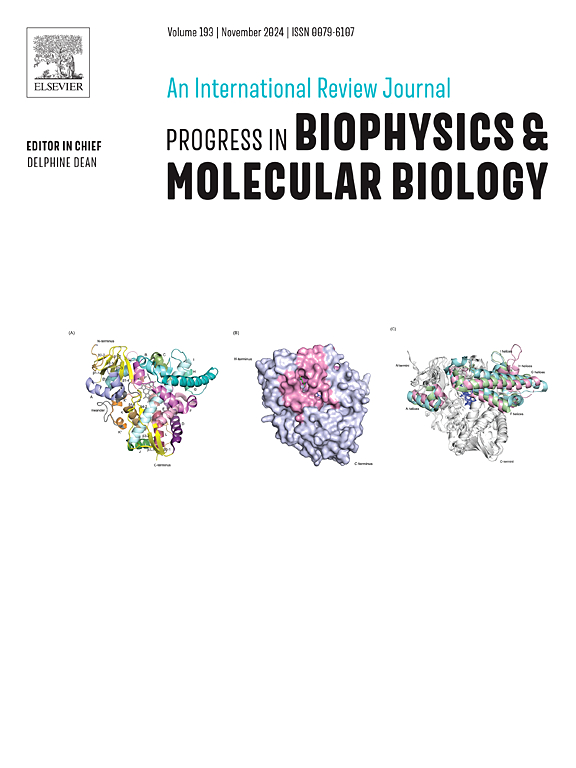Transforming agents: The power of structural modifications in glioblastoma multiforme therapy
IF 4.5
3区 生物学
Q2 BIOCHEMISTRY & MOLECULAR BIOLOGY
Progress in Biophysics & Molecular Biology
Pub Date : 2024-12-17
DOI:10.1016/j.pbiomolbio.2024.12.001
引用次数: 0
Abstract
Glioblastoma (GBM) is a very deadly type of brain tumor with a poor prognosis and a short survival rate. Recent advancements in understanding GBM's molecular and genetic characteristics have led to the development of various therapeutic and diagnostic strategies. Key elements such as microRNAs, lncRNAs, exosomes, angiogenesis, and chromatin modifications are highlighted, alongside significant epigenetic alterations that impact therapy and diagnosis. Despite these advancements, molecular classifications have not improved patient outcomes due to intratumoral diversity complicating targeted therapies. In this article, it is tried to emphasize the potential of investigating the epigenetic landscape of GBM, particularly identifying patients with diffuse hypermethylation at gene promoters associated with better outcomes. Integrating epigenetic and genetic data has enhanced the identification of glioma subtypes with high diagnostic precision. The reversibility of epigenetic changes offers promising therapeutic prospects, as recent insights into the “epigenetic orchestra” suggest new avenues for innovative treatment modalities for this challenging cancer. In this review article, we focus on the roles of translational elements and their alterations in the context of GBM diagnosis and therapy.

转化剂:结构改变在胶质母细胞瘤多形性治疗中的作用。
胶质母细胞瘤(GBM)是一种非常致命的脑肿瘤,预后差,生存率短。最近在了解GBM的分子和遗传特征方面取得的进展导致了各种治疗和诊断策略的发展。关键因素如microRNAs, lncRNAs,外泌体,血管生成和染色质修饰,以及影响治疗和诊断的显着表观遗传改变。尽管取得了这些进展,但由于肿瘤内的多样性使靶向治疗复杂化,分子分类并没有改善患者的预后。在这篇文章中,它试图强调研究GBM表观遗传景观的潜力,特别是识别基因启动子漫漫性高甲基化的患者与更好的预后相关。结合表观遗传学和遗传学数据,提高了胶质瘤亚型的识别,诊断精度高。表观遗传变化的可逆性提供了有希望的治疗前景,因为最近对“表观遗传管弦乐队”的见解为这种具有挑战性的癌症的创新治疗方式提供了新的途径。在这篇综述文章中,我们将重点讨论翻译因子的作用及其在GBM诊断和治疗中的变化。
本文章由计算机程序翻译,如有差异,请以英文原文为准。
求助全文
约1分钟内获得全文
求助全文
来源期刊

Progress in Biophysics & Molecular Biology
生物-生化与分子生物学
CiteScore
8.60
自引率
7.90%
发文量
85
审稿时长
85 days
期刊介绍:
Progress in Biophysics & Molecular Biology is an international review journal and covers the ground between the physical and biological sciences since its launch in 1950. It indicates to the physicist the great variety of unsolved problems awaiting attention in biology and medicine. The biologist and biochemist will find that this journal presents new and stimulating ideas and novel approaches to studying and influencing structural and functional properties of the living organism. This journal will be of particular interest to biophysicists, biologists, biochemists, cell physiologists, systems biologists, and molecular biologists.
 求助内容:
求助内容: 应助结果提醒方式:
应助结果提醒方式:


